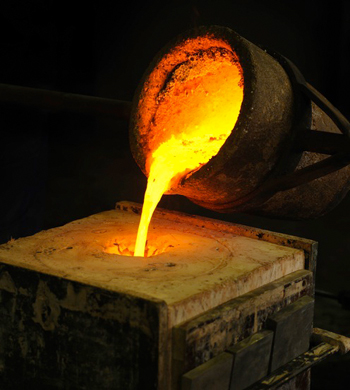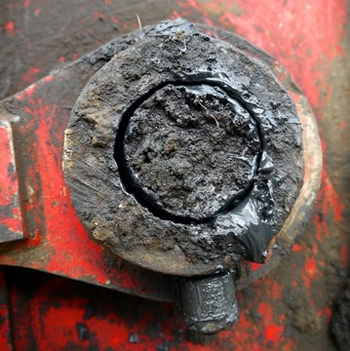Refractory Products and Crucibles
Refractories
More than 2,000 years ago the Celts used graphite in the production of fireproof bricks. In today's heavy industry world graphite still plays an important role in this application given its high resistance to oxidation, its outstanding thermal conductivity, and its chemically inert behavior. As a highly resistant thermally conductive additive graphite is an important component of many refractory materials used in the metal-production industry such as steel manufacturing. In these harsh environments it can be found in both magnesite bricks for furnace lining, in continuous casting gutters, or mould compounds.
Crucibles
A crucible is a container used to hold metal for melting in a furnace and must be able to withstand the extreme temperatures encountered in melting metals. It must also be able to offer resistance to chemical erosion. Large flake graphite with its well pronounced crystal structure and strong covalent bonding can offer a higher melting point than virtually all metals being melted and good strength even when white hot. This strength also ensures a long service life and reduced formation of deposits and slag in crucible applications. Graphite also is used as covering material for high-quality molten metal - for example, high-purity flake graphite is used in copper and aluminum smelting.

Lubricants

Graphite lubricants are specialty items for use at very high or very low temperatures, as forging die lubricant, an antiseize agent, a gear lubricant for mining machinery, and to lubricate locks. Having low-grit graphite, or even better no-grit graphite (ultra high purity), is highly desirable. It can be used as a dry powder, in water or oil, or as colloidal graphite (a permanent suspension in a liquid).
| Refractory and Crucible Product Specs | Finished Grade | Mesh Size | Ash Content | Bulk Density | Moisture Content |
|---|---|---|---|---|---|
| Refractories | 85-90%C | -50 +100 | 2-10% | 1.12 gm/cm3 | |
| Crucibles | 85-90%C | -100 +200 | .4-.5gm/cm3 | ||
| Lubricants | 95%C | -50 +500 | .4-.5gm/cm3 | 0.5% |
